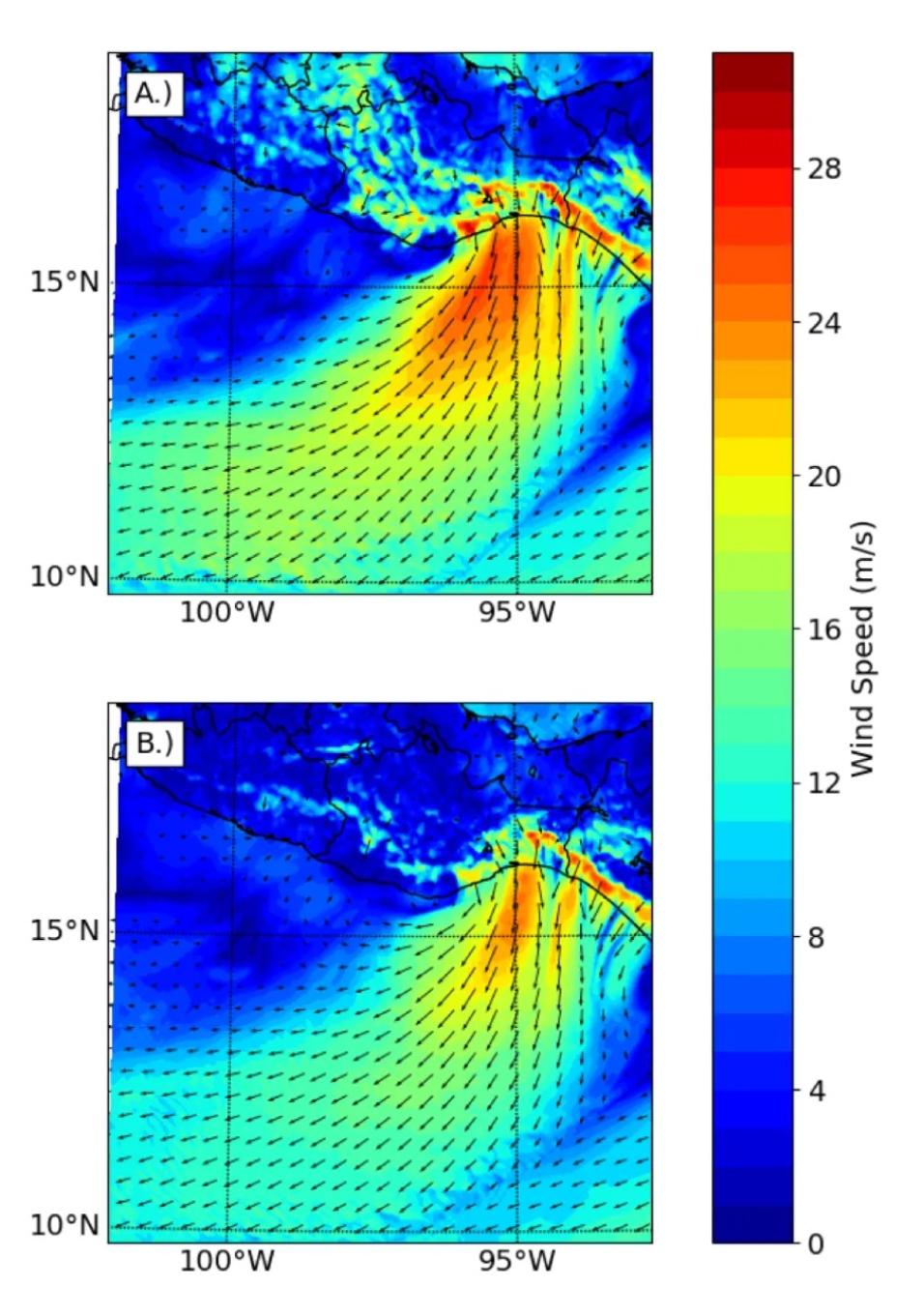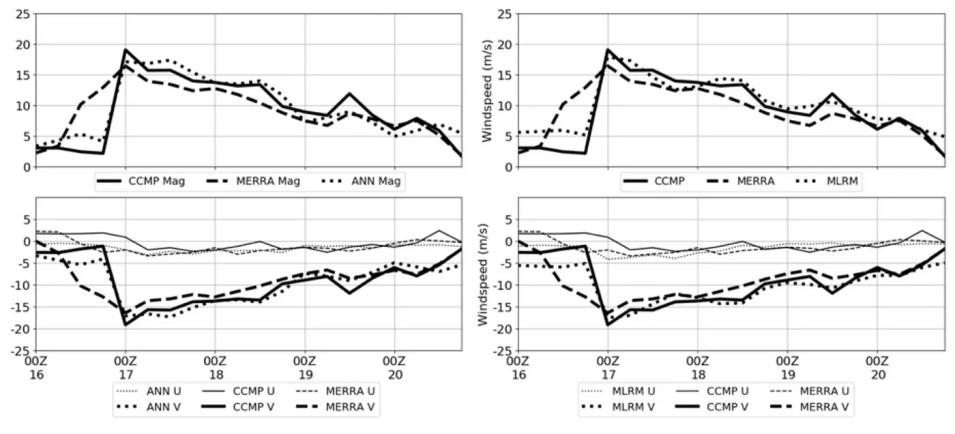IMPACT member Dr. Emily Foshee has just concluded research focused on increasing our understanding and prediction of terrain-driven low-level wind jets (known as mountain gap winds or MGW) that result from the interaction between the larger scale atmospheric flow and terrain. While this phenomenon occurs in many locations across the globe, Dr. Foshee focused specifically in the region of the Gulf of Tehuantepec in the eastern Pacific. The resulting MGW here originates from the Chivela Pass in the Sierra Madre mountain range and extends hundreds of kilometers over the gulf. Additionally, it’s one of the few phenomena characterized by such wide-spread and sustained hurricane-force winds.
Asked about the applications of this line of research, Dr. Foshee explained, “Increasing the predictive capability of MGW is important as onset of this phenomena as it flows out and over the ocean can induce strong cold water upwelling and a pretty substantial reduction in sea-surface temperatures of as much as 8 C. This upwelling of colder, more nutrient rich water can affect the distribution of marine life and subsequently fishing; a vital industry within the region.”
Two main aspects addressed by Dr. Foshee’s research are: 1) How to improve the skill of forecasting of MGW over the Gulf of Tehuantepec, and 2) What are the impacts of MGW on tropical cyclone evolution and intensification? The first aspect took two approaches. The first aspect of the research involved utilizing traditional forecast models to understand the governing processes that drive the evolution of the gap winds and determining how to best represent these processes within the model. In the second aspect, Dr. Foshee utilized a non-traditional approach utilizing machine learning techniques to create short-term point predictions of wind speed within the climatological maximum in wind speed in the jet. The second aspect examined the effects of MGW on the evolution and intensification of tropical cyclones (TC) in the eastern Pacific.
The results of this research into the utilization forecast models demonstrate that a very specific Numerical Weather Prediction (NWP) configuration was required to accurately predict the strength of the jet. This configuration required small horizontal grid spacing, appropriate scale interactions, and the inclusion of ocean-atmosphere coupling that best resolved processes such as heat fluxes, vertical mixing, and baroclinicity within the boundary layer. While making these changes within operational forecast models is not feasible, the results did show high-resolution representations of the connections between the structure of the jet and physical processes not previously seen before; helping to further our understanding of gap winds over the Gulf of Tehuantepec.


